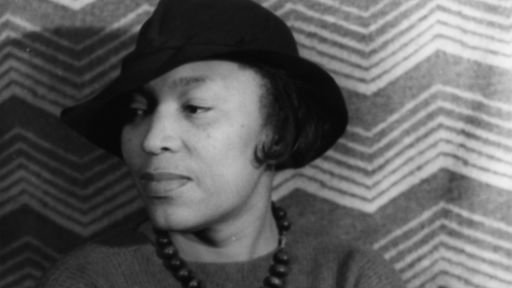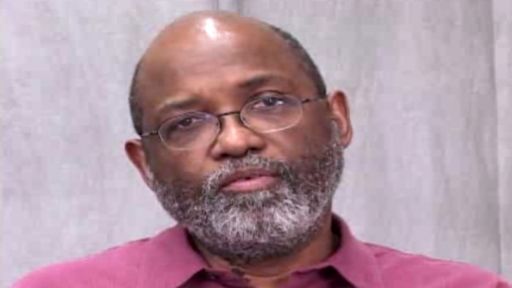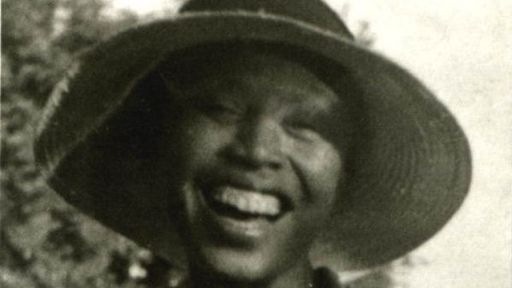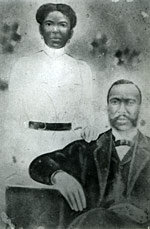
Born to John Hurston, a Missionary Baptist preacher and carpenter, and Lucy Potts Hurston in Notasulga, Alabama, Hurston is the fifth of eight children. Image courtesy of the Zora Neale Hurston Trust.
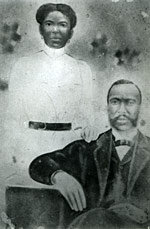
Moves to Eatonville, Florida, the first incorporated black community in America, where her father becomes mayor. Image courtesy of the Zora Neale Hurston Trust.

At age 13, Hurston's mother dies and she is sent to Jacksonville to attend school. Her father stops paying tuition, and she leaves school. Image courtesy of the Zora Neale Hurston Trust.
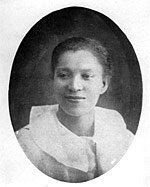
Graduates from Morgan Academy in Baltimore and attends Howard University in Washington, D.C. There, she plays the violin; writes for STYLUS, the university's literary journal; is published in the magazine OPPORTUNITY; works as a maid and manicurist, and is on staff at the Cosmos Club; meets Herbert Sheen, her future husband. Photo courtesy of American Philosophical Society.
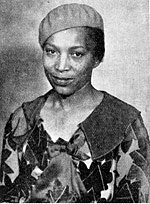
Encouraged by the editor of OPPORTUNITY, she moves to New York and gets a scholarship to attend Barnard College; she would later become Barnard's first black graduate. Also, wins a literary contest in OPPORTUNITY, and works for writer Fannie Hurst as a secretary and chauffeur. Photo used by permission of the Continuum Publishing Group.
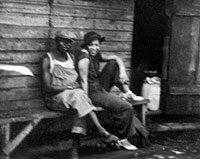
Goes back to Eatonville, under a grant from Columbia University, to gather folk tales. Is not successful and returns to New York to help publish FIRE!!, a collection of literature and art which includes her short story "Sweat," while her play COLOR STRUCK wins an OPPORTUNITY award. Photo by Alan Lomax for the Library of Congress.

Wealthy New Yorker Charlotte Mason agrees to finance Hurston's folklore expedition to Florida, Alabama, New Orleans, and the Bahamas over the next five years. Hurston interviews the oldest living slave, Cudjo Lewis, and writes "Barracoon" and "Folktales from the Gulf States." Marries Herbert Sheen. NEW YORK HERALD TRIBUNE photo, gift to the Library of Congress.
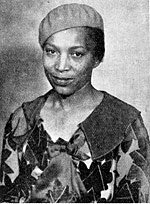
Receives her Bachelor of Arts from Barnard College. Photo used by permission of the Continuum Publishing Group.
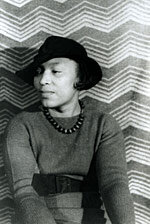
Writes play MULE BONE with Langston Hughes; however, Hurston copyrights it solely under her name. Also, copyrights DE TURKEY AND DE LAW. A legal battle ensues between Hurston and Hughes, and as a result, the play can not be produced during either writer's lifetime. Photo by Carl Van Vechten, courtesy of Library of Congress.
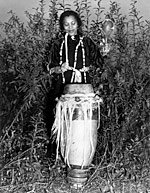
Publishes "Hoodoo in America" in the JOURNAL OF AMERICAN FOLKLORE. Is divorced from Herbert Sheen. Writes and produces a segment for the revue FAST & FURIOUS on Broadway. NEW YORK HERALD TRIBUNE photo, gift to the Library of Congress.
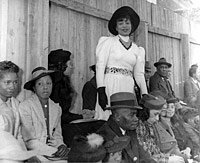
Has a two-night run on Broadway of her play THE GREAT DAY, which profiles everyday life of black folks in the South. Photo courtesy of Alex Rivera.
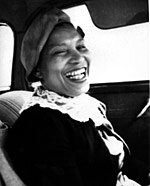
Lippincott publishes her first novel, JONAH'S GOURD VINE, about her father. She publishes "Characteristics of Negro Expression" and other essays in the coffee table book NEGRO: AN ANTHOLOGY and goes to Bethune-Cookman College to establish a department of dramatic arts. Photo by Jane Belo, courtesy of The University of Florida.
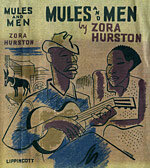
Joins Alan Lomax and Mary Elizabeth Barnicle gathering folktales, music, and a slave narrative in Georgia, Florida, and the Bahamas for the Library of Congress. MULES AND MEN is published. Image courtesy of Marian Elena Rico Covarrubias, Cover Lippincott.
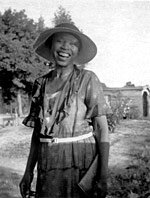
Heads to the Jamaica and Haiti with a Guggenheim Fellowship in literary science to study folk medicine and sympathetic magic. Writes THEIR EYES WERE WATCHING GOD in seven weeks, inspired by deep urges inside of her. Photo by Alan Lomax for the Library of Congress.
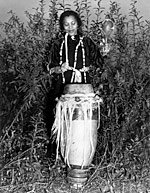
Returns to Haiti with a second Guggenheim Fellowship to study voodoo. THEIR EYES WERE WATCHING GOD is published. NEW YORK HERALD TRIBUNE photo, gift to the Library of Congress.
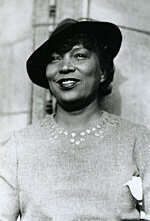
Writes TELL MY HORSE, which is published, and joins the Federal Writers Project in Jacksonville, Florida to work on THE FLORIDA NEGRO. Photo: Library of Congress.
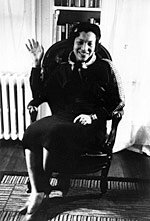
Is recorded by the WPA folklorist Herbert Halpert in Jacksonville singing folk songs; begins a book tour for TELL MY HORSE; writes "Now Take Noses" in CORDIALLY YOURS; marries wealthy bachelor Albert Price III in Florida at Beulah Baptist Church; hired as a drama instructor by North Carolina College for Negroes at Durham; conducts a workshop on Negro drama at the University of North Carolina; publishes MOSES, MAN OF THE MOUNTAIN. Photo by Prentiss Taylor, courtesy of Smithsonian.

Quits her job at North Carolina College for Negroes and makes a folklore expedition to Beaufort, South Carolina to document religous trance. Photo courtesy of The University of Florida Library.
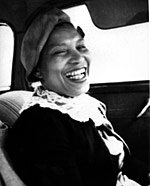
Write her autobiography: DUST TRACKS ON A ROAD. Then, after complaints from her publisher, begins re-writing it. Works as a story consultant at Paramount Pictures in Los Angeles for producer Arthur Hornblow. Arranges a Haitian symphony concert with conductor William Grant Still. Photo by Jane Belo, courtesy of The University of Florida.
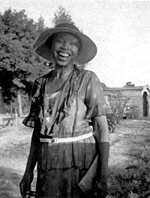
Lippincott publishes DUST TRACKS ON A ROAD, ending her five-book contract. Hurston publishes "Story in Harlem Slang" in THE AMERICAN MERCURY, and a profile of a Florida black cattle rancher in THE SATURDAY EVENING POST. Takes a short-term teaching job at Florida Normal in St. Augustine; presses the NAACP to demand better living quarters and job recognition for black soldiers stationed there. Photo by Alan Lomax for the Library of Congress.
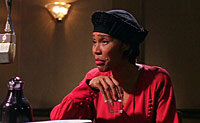
Is interviewed by Mary Margaret McBride in New York. DUST TRACKS is awarded the Anisfeld-Wolf Book Award in Race Relations. Zora appears on the cover of THE SATURDAY REVIEW; lives aboard The Wannago in the Daytona Beach marina where she often entertains Mary Bethune's staff. Receives Howard University's Distinguished Alumni Award; divorces Albert Price and marries James Howell Pitts, divorcing him a year later. "The 'Pet Negro' System" and "High John de Conquer" are published in THE AMERICAN MERCURY. Reenactment image from ZORA NEALE HURSTON: JUMP AT THE SUN.

"My Most Humiliating Jim Crow Experience" is published in THE NEGRO DIGEST. Writes POLK COUNTY with Stephen O'xylion and Dorothy Waring. Image courtesy of The University of Florida Library.
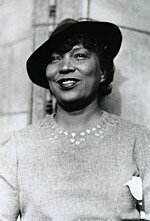
"The Rise of the Begging Joints" is published in THE AMERICAN MERCURY and "Crazy for This Democracy" in THE NEGRO DIGEST. Photo: Library of Congress.
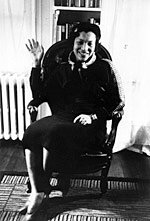
Returns to New York and works for Republican congressional candidate, who loses to Adam Clayton Powell. Photo by Prentiss Taylor, courtesy of Smithsonian.
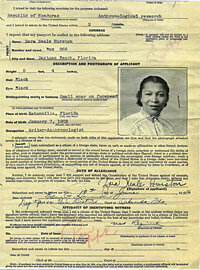
Lives alone in an apartment on 124th Street in Harlem. The symphony she'd co-written in 1941 is finally published as CARIBBEAN MELODIES; wins another Guggenheim, goes to Honduras to research indigenous communities in Central America while writing the novel BARNEY TURK for her new publisher, Scribners. Image: Zora's passport application for trip to Honduras.
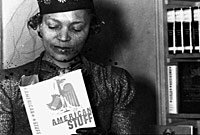
Accused of molesting two pre-teen boys, arrested along with three others. Bailed out by Maxwell Perkins of Scribners. Criticized by the Afro-American and the Pittsburgh Courier. SERAPH ON THE SUWANEE is published.
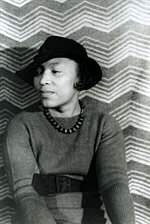
Embarassed by headlines about court case, becomes depressed and suicidal. Molestation case against her is dismissed as groundless. Photo by Carl Van Vechten, courtesy of Library of Congress.
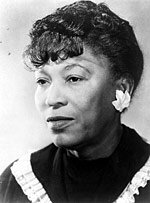
"Conscience of the Court," about a black maid jailed for assaulting a white man, is published in THE SATURDAY EVENING POST; "What White Publishers Won't Print" is published in NEGRO DIGEST; "I Saw Negro Votes Peddled" is published in THE AMERICAN LEGION magazine, alleging blacks sold their votes for a quarter each. MIAMI HERALD breaks story that Hurston is down on her luck working as a maid in Miami. Photo courtesy of The University of Florida Library.
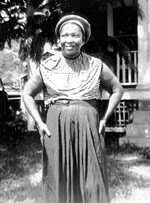
Moves to Belle Glade, Florida. Joins an interracial council created by the NAACP through its recent West Palm Beach branch; lives at the Roof Top Garden Hotel where she sports a cloth turban on her head and tells folktales to neighborhood children; advises her friend Sarah Creech Smith on an anthropologically correct doll that Creech creates. "Why the Negro Won't Buy Communism" is published in THE AMERICAN LEGION magazine and "A Negro Voter Sizes Up Taft" in THE SATURDAY EVENING POST. Photo by Horace Gray, courtesy of Mary Rose Barnes.

Hired by THE PITTSBURGH COURIER to cover the Ruby McCollum case. Increases Florida circulation of the newspaper three-fold. Also, receives a Freedom Foundation medal but does not have the money to go to New York for the ceremony. Sends her agent to collect the award. Photo by Jane Belo, courtesy of The University of Florida.

After working as a librarian at Patrick Air Force Base in Florida for a year, Zora is fired. She lives in a trailer in Cocoa when THE FT. PIERCE CHRONICLE offers her a job writing a column on "Hoodoo and Black Magic." Moves to Fort Pierce, Florida and works for the newspaper for the next two years. Photo courtesy of The University of Florida Library.

Suffers a debilitating stroke and is forced to enter the St. Lucie County Welfare Home in October where she is visited by friends and family who find her despondent. Photo by Carl Van Vechten, courtesy of Library of Congress.

Dies at age 69 in the St. Lucie County Welfare Home of hypertensive heart disease on January 28 and is buried in an unmarked grave in the segregated Garden of Heavenly Rest, Fort Pierce. Photo by Prentiss Taylor, courtesy of Smithsonian.


